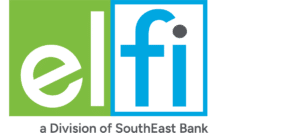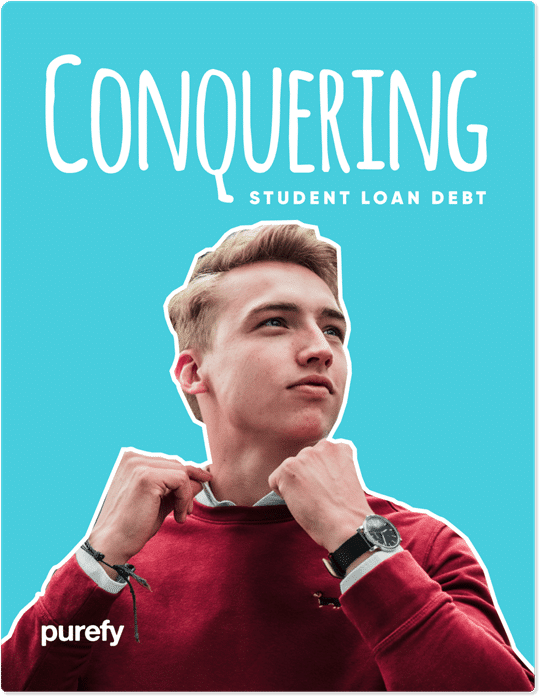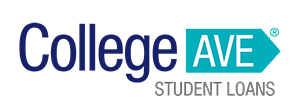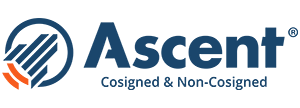If you’ve been hearing a lot about student loan refinancing but aren’t sure what it is exactly, here is a breakdown of how it works.
Once you graduate, you may find yourself with multiple federal and private student loans. In fact, the average amount of debt for an undergraduate degree is just under $30,000 and for a graduate level degree it is averaging a total of $66,000.
Under normal circumstances, that amount of debt commonly takes up to 20 years to pay off. And if you went through a post-graduate program, like medical school or law school, it could take even longer.
So why refinance student loans?
Simply put, refinancing is a way to save money. The refinancing process became popular in the mortgage industry years ago but has a much shorter history in the student loan arena.
About a decade ago, someone had the foresight to see that student loan debt was growing exponentially (and is currently over $1.6 trillion – more than total credit card debt). That created an opportunity to introduce refinancing to the private lender student loan marketplace.
Like mortgage refinancing, taking existing federal student loans and refinancing them to a lower interest rate is a great way to lower your overall costs and possibly get your loans paid off more quickly.
It can be a great solution for people who have strong income and good credit.
How does refinancing my federal student loans work?
Once scholarships, gifts, and grants have been exhausted, many people finance their education by taking out student loans. They usually start first with federal loan programs, like direct subsidized and unsubsidized loans and direct PLUS loans (e.g., Parent PLUS loans).
Then, if there is still a gap in education financing, people often supplement with private loans from banks, credit unions, and other private lending sources.
After they graduate, they find themselves with tons of student loans that all have different interest rates, and a variety of monthly payment amounts and due dates.
When you refinance your federal and private student loans at the right time, you have the opportunity to lower your interest rates into a single consolidated loan with a more favorable monthly payment amount and a single payment date and loan servicer.
When is the right time to refinance?
The right time to refinance any loan is when interest rates are lower than what you are currently paying.
While it can be especially beneficial when the difference is several percentage points, it can often make sense even when the rates are only a point or two under what you are currently being charged. That’s because, unlike refinancing a mortgage, many student loan lenders don’t charge any application fees or origination fees, so it doesn’t cost a thing.
To determine your possible savings, first average your interest rates from all of your private and federal student loans and compare that number to the daily rates being offered at financial institutions that offer refinanced student loans.
The 2 Best Companies to Refinance Student Loans
Our Top-Rated Picks for 2024 Offer Low Rates and No Fees

5 Steps to Refinancing Federal Student Loans
This is a great time to explore options — the student loan refinance marketplace is highly competitive, and rates are at all-time lows. Plus, refinancing federal student loans is super easy and can be done entirely online at no cost to you.
There are five basic steps to get you to a new refinanced federal student loan. Let’s take a look at each in turn:
1. First thing to do is gather and review your financial and college information to make sure that you will be eligible to refinance your federal student loan(s). You will need the following information:
- A credit score of 670 or higher for most private lenders (although, the simple truth is the higher your credit score, the better the interest rate you can qualify for).
- To help you understand where you are — obtain a free credit report annually that summarizes information from each of the three major credit companies.
- That will give you a current credit score and a breakdown of any issues that may need to be disputed or resolved. As a general rule, it’s a good idea to do an annual review of all three credit reports to correct inaccuracies and spot identity theft.
- Your total income which can include W-2 (paycheck) information, 1099 earnings, and self-employed income that you show on your annual 1040 tax form, Schedule C. This is the income a lender will consider when reviewing your ability to repay your refinanced student loan.
- Your debt-to-income ratio (DTI) which calculates your fixed monthly payments (e.g., mortgage or rent, auto loans, credit card minimums, and student loan payments) divided by your pre-tax monthly income to come up with a percentage. Less than 38-40% is usually considered favorable, but the lower the better.
- Add together your total outstanding student loans – most lenders have a minimum of $5,000 – plus your monthly payments and current interest rates (you’ll need these when comparing rates and terms).
- When refinancing, you’ll want to tell them the type of degree you obtained and what school you attended.
2. Get quotes from various private lenders, including their best interest rates and terms based on your personal financial position (e.g., credit score, expendable income, etc.). You can do this by researching and reviewing various student loan refinance lenders or, better yet, use a site like Purefy.com that does the legwork for you.
With Purefy’s Compare Rates tool, you can add your personal information and submit for a list of pre-qualified quotes that give you the interest rates you qualify for, as well as term options and any special programs or deals available. Note: Purefy uses a ‘soft-pull’ credit report which won’t affect your credit score.
3. Next, comes the job of comparing the various interest rates, loan terms, and special offers or incentives to find the optimum lending package for you and your lifestyle. It’s important to understand the financial implications, so be sure to ask questions or talk to your financial advisor.
If you’re using Purefy’s tool, take advantage of their free student loan refinance consultation services. Purefy has student loan advisors with extensive knowledge of refinancing federal student loans available to help you compare rates and answer your questions. They can also guide you through the entire application process once you decide on a lender.
4. Once you have found the lender with the best overall package, it’s time to fill out the application form. At this point, the lender will pull a ‘hard’ credit report that may have an impact on your credit score, at least temporarily. The application process usually takes about 15 minutes and since you are already pre-qualified (if you used Purefy), there shouldn’t be any surprises.
Your new lender will ask that you to submit some financial documentation. This may include:
- Proof of Income – recent pay stubs or tax returns
- Your ID which could be a driver’s license, passport, or other state-issued ID
- Proof of your degree
- Residency proof – usually a document that confirms where you live.
- Your current loan documents that will detail payoff information, etc.
5. After you are officially approved, your new lender will pay off your existing loans and you will start paying a single loan payment each month. Be sure to continue paying your current loans until you receive absolute confirmation – you don’t want to damage your credit report by missing a payment.
See How Much You Can Save
View Details
Collapse
Step 3: See How Much You Can Save
$15,310
Lifetime Interest
Savings
$1,018
New Monthly
Payment
$128
Monthly
Savings
| Current Loan | New Loan | Savings | |
|---|---|---|---|
| Rate | 6.7% | 4.2% | 2.5% |
| Lifetime Interest | $37,520 | $22,210 | $15,310 |
| Monthly Payment | $1,146 | $1,018 | $128 |
Like what you see? Check your actual prequalified rates from the industry’s top lenders in just 2 minutes or less.
Can I Use a Cosigner?
Yes, in most cases. If you are unable to meet the criteria, many lenders will allow you to use a cosigner to qualify. That person will have to meet or exceed all of the credit requirements on your behalf. They will also have your student loan debt on their credit report until it is paid or released.
If you have good income, but just need to build up credit worthiness, some lenders allow a cosigner release. That allows you to request the cosigner be taken off your loan after you have demonstrated that you can pay in a timely manner – usually after 12 – 24 months.
It is an excellent way to build up credit without keeping your cosigner tied up for the full term of the loan.
5 Top Benefits of Refinancing Federal Student Loans
When you ask yourself “How do I refinance my federal student loans?” you also want to know what benefits you might enjoy if you choose to move forward.
Let’s start with the best reason of all!
1. A lower interest rate saves you money – There’s a good chance that you are paying over five or six percent interest on your federal student loans and even more if they are unsubsidized direct loans or Parent PLUS loans.
When you refinance those student loans at today’s historically low rates, you can score significantly lower interest (depending on your credit rating and DTI). Many companies are offering interest rates at around 2.5% for fixed rate loans and 1.88% for variable rate loans.
To understand what that means, let’s say you have $35,000 in federal and private student loans and are paying 6.5% interest for ten years. That equates to a $397.42 monthly payment and total interest paid of $12,690.15.
If you refinance that same $35,000 loan package at 2.6% interest for 10 years, your monthly payment will drop to $331.54, and your total interest paid would be $4,784.64. Check out our college loan refinance calculator to see how much your savings would be.
If you choose a variable loan, it saves you even more. But remember variable rate loans are recalculated monthly or annually and with the anticipated rate hikes coming in 2022 and 2023, variable rate loans may become less desirable.
2. You can choose shorter terms to pay off your loan sooner. When you refinance you can choose from a number of term options, e.g., 5-year, 7-year, etc. That will allow you to pay off your loan more quickly and free up your buying power for other things.
Be sure to keep an eye on how this impacts your monthly payment – it will go up if you condense the payment schedule, so be sure you can afford the new payment amount.
3. Choose longer terms to lower your monthly payments. Many private refinance lenders offer loan terms for 15 and even 20-25 years. Spreading out your payments over a much longer period will make your monthly payments smaller. However, you may pay more in interest over the entire life of the loan.
4. Letting a cosigner go – if you have used a cosigner and are now in a position to take full responsibility for your student loan debt, refinancing is a great way to relieve a cosigner of further obligation. This can be a welcome help if you used a parent or grandparent who now would like to focus their financial resources on retirement or some other goal.
5. And here’s a real plus — it’s free! When refinancing your federal student loans through Purefy, it doesn’t cost you a thing. There are no application fees or origination fees, and most don’t have any pre-payment penalties. That means if you want to pay off your loan early or refinance again down the road, there is no charge.

Free eBook: How to Conquer Student Loans
Free eBook: How to Conquer Student Loans

5 Potential Drawbacks of Refinancing Federal Student Loans
As with anything, there are drawbacks to refinancing federal student loans. When looking at how do I refinance my federal student loans, it’s important to weigh these five potential drawbacks:
1. The federal loan program doesn’t offer any type of refinancing options other than a direct loan consolidation. With a direct loan consolidation, the federal government allows you to consolidate your federal loans into one loan at an interest rate equal to the average of all your federal loans. There is also no cost to you to consolidate your loans.
There is only one drawback to a consolidation loan — interest rates are at historic lows and by refinancing you have the opportunity to take advantage of the lower rates and better terms. With a consolidation loan, you will end up with the same average interest for one loan that you had with multiple loans.
2. If you have an income-driven repayment plan, or are planning to apply for one, you lose this benefit with a private lender. This is specifically offered for federal student loans only and isn’t transferable to the refinance market.
An income-driven repayment plan is when your monthly loan payment is capped at a percentage of your discretionary income (usually between 10 and 20% depending on the type of plan you have). Plus, your repayment terms are extended to as long as 25 years, again depending on the type of plan.
3. If you have or plan to apply for a loan forgiveness program for your federal student loans, this benefit is not available through refinancing. If you are already participating in a loan forgiveness program, you will want to carefully weigh your options.
This includes public service loan forgiveness and teacher loan forgiveness programs where your balance is forgiven after you make 120 qualifying monthly payments working for a designated employer. It also includes discharging loan responsibility due to permanent disability, bankruptcy, or death.
Another drawback on loan forgiveness — if there is eventually any loan forgiveness issued by Congress, it will be for federal loans only and won’t impact private refinanced loans.
4. You may not qualify for an advantageous interest rate that is significantly lower than what you are already paying on your existing student loans. Depending on the rate you originally received and what you can qualify for now, there may not be much difference.
If you want to opt for a variable rate loan where you pay a smaller interest rate at the beginning of the loan, you need to carefully weigh the current economic situation before proceeding. Variable rate loans are adjusted based on the prevailing interest rates and can go up over time.
With the potential for interest rate increases in 2022 and 2023, you want to be sure you understand the impact to your loan payments each month. Again, Purefy offers expert loan advisors who can answer your questions about the best refinancing options for you.
5. Access to federal deferment and forbearance options will change. While most private lenders have some form of deferment or forbearance, you lose access to the generous federal options.
If you face a financial hardship, like loss of a job or a medical issue, you no longer have access to the more lenient federal deferment or forbearance choices. That can be a strong consideration if you are dealing with health issues that could potentially worsen or are employed in an unpredictable job category.
Should You Refinance Your Federal Student Loans?
That question will depend on several things. First, will you save money by refinancing your federal and private student loans? When you look at all of your loans together, is the average interest rate you are now paying more than what you will get with a refinanced loan through a private lender?
Second, if your intention is to either shorten or lengthen your terms, does the interest rate you qualify for make it feasible with the new payment terms? Can you actually save money overall?
Last, you need to evaluate if losing access to federal repayment, deferment, or forbearance plans will be problematic. While some private lenders offer similar options, it’s important to understand the difference between what you anticipate needing and what’s available. Read our post on the pros and cons of refinancing federal student loans for a deeper look at this topic.
How to Compare Lowest Student Loan Refinance Rates
What was once a long, drawn-out process is now something that you can do online in minutes and at no cost to you.
At Purefy.com, you can type your personal information into their Compare Rates Tool and have pre-qualified offers in two minutes or less. They work with top industry lenders that each have proven track records for refinancing student loans and have a variety of progressive rates and programs.
Once you receive your pre-qualified offers, you can compare rates and then head to the lender you choose to submit an application – the whole thing takes about 15 minutes.
You can also rest assured that your personal information is handled in a 100% secured manner using industry-leading encryption.
The Comparison Rate Tool is free to use, and you will receive actual offers, not teaser rates that change once you apply. And there is no impact to your credit report until you actually apply.
To sum up
You have a lot of things to consider when it comes to refinancing your federal student loans. Start with the basics:
- Credit score and credit report review.
- What’s your income, whether you earn a paycheck, do gig work, are self-employed, or a combination of things?
- How much money do you owe overall?
Once you know how you are positioned, it’s a breeze to obtain and compare pre-qualified quotes that can translate into real savings when you refinance your federal and private student loans.
At Purefy, the experts have done the research for you and selected the top refinance lenders in the industry. Each has been evaluated for things like trust and reputation, transparency, security, industry-best interest rates and flexible terms for repayment, and finally, no fees for applying or originating a new refinanced student loan.
Refinancing your federal and private student loans should be a simple, straightforward experience that ends with a successful new loan from your lender. Contact Purefy to learn more about the process and to try their quote tool to check current lender rates today.




















